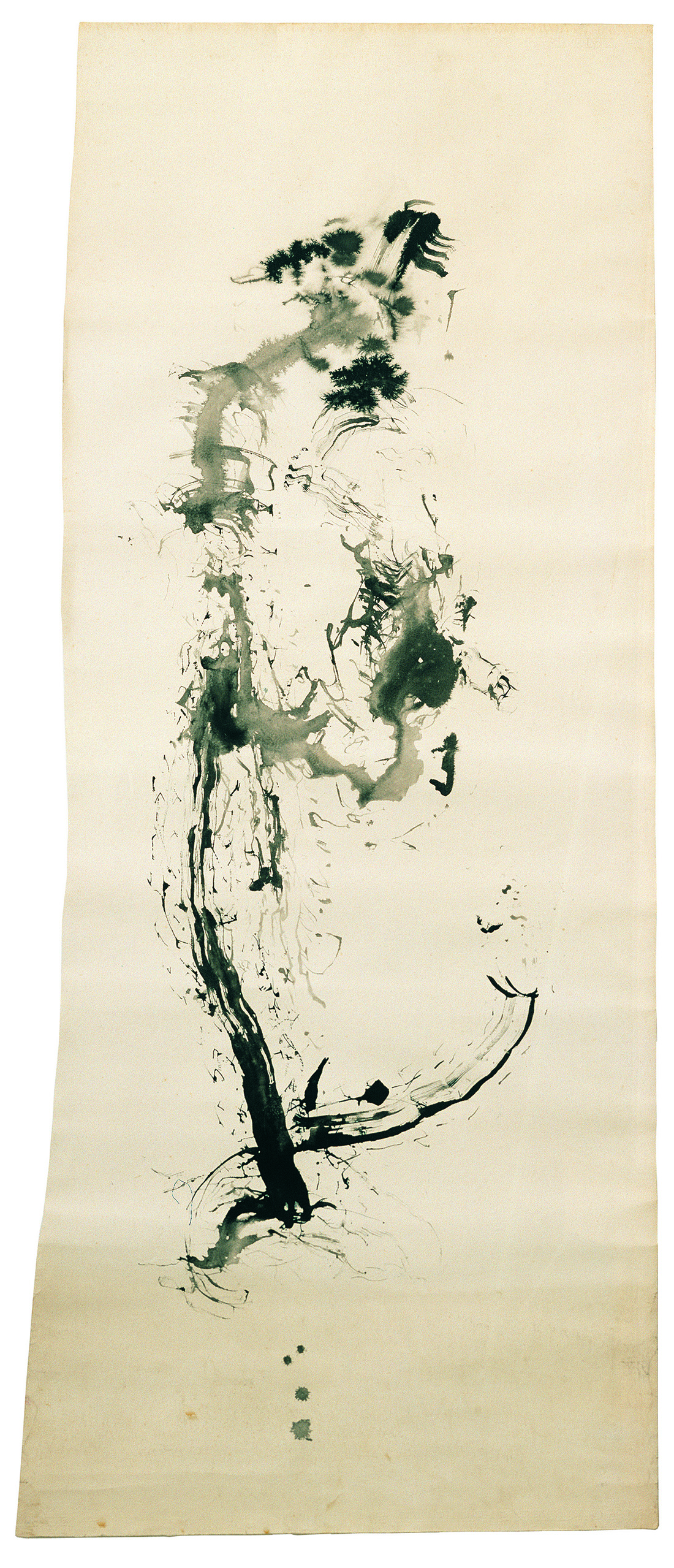THE FUTURE IS NOW
- Filter

Untitled (Tie Drawing II)
Artist
Nam June PaikDating
Medium
Ink on paper
151 x 62 cm
Credits
Collection of Peter Wenzel, Germany
Image © Thomas Paulus
Two founding principles of Zen art are a minimal use of colour and a prudent use of the brush. In most instances, Zen painting is limited to black ink pigments on a white surface, but rather than a lack of colour, its black-on-white format may be understood as a culmination of all colours. Here, absence emphasises presence all the more.
Paik first used his tie as a painting tool during an “action music” scene in Stockhausen and Bauermeister’s Originale in 1961. He went on to create more such works the following year, during Fluxus International Festspiele Neuester Musik. Using his head and tie with ink on a long paper scroll, he produced several works including Zen for Head. These gestural “brushstrokes” connect Paik’s radical actions to traditional Asian calligraphy and Zen philosophy.